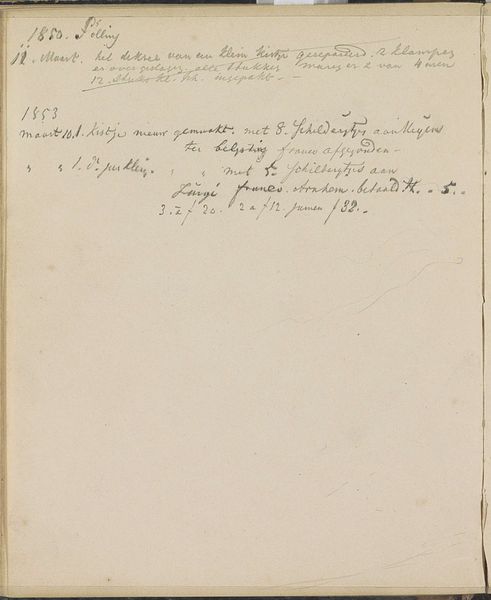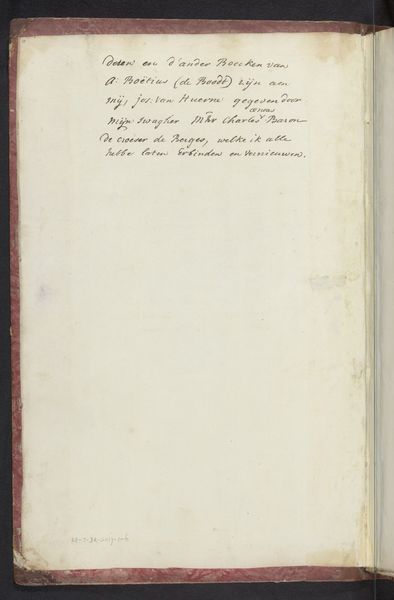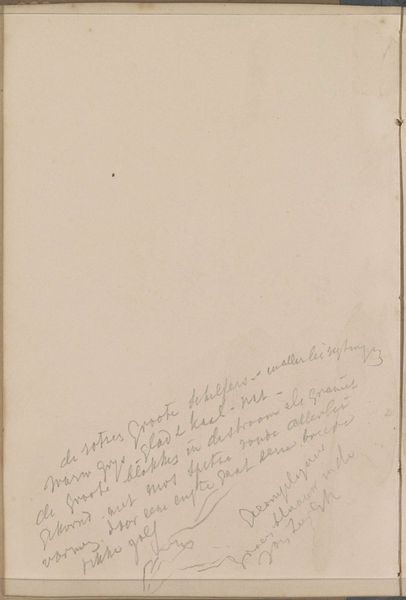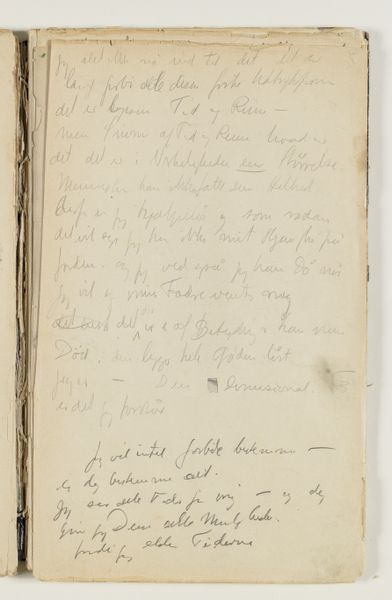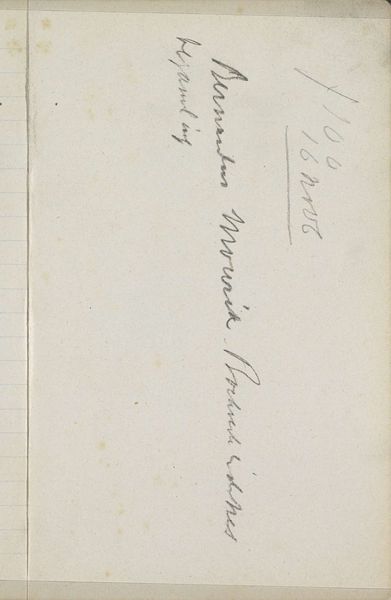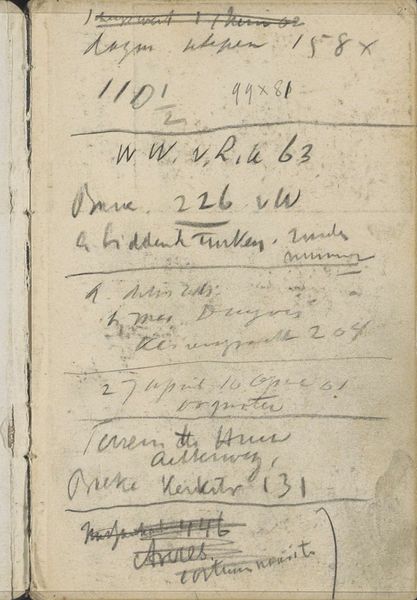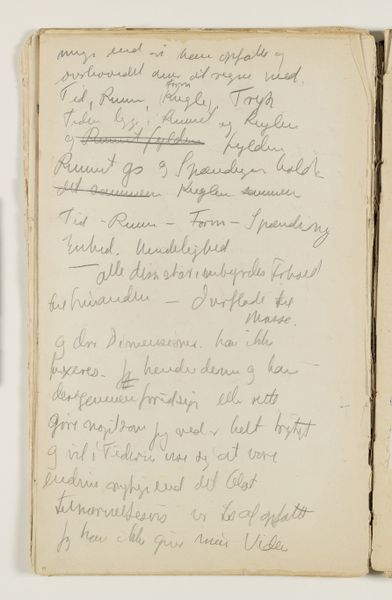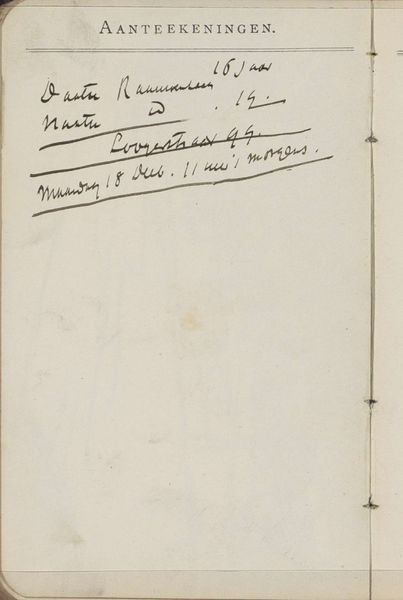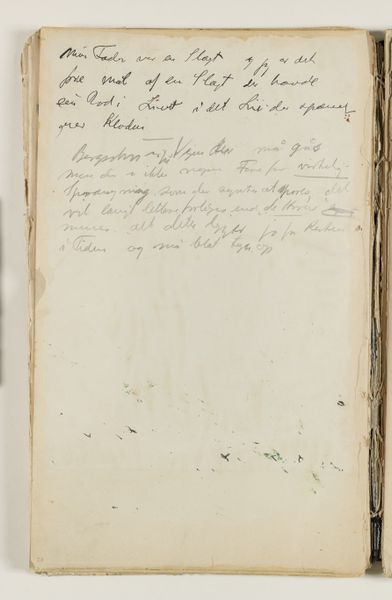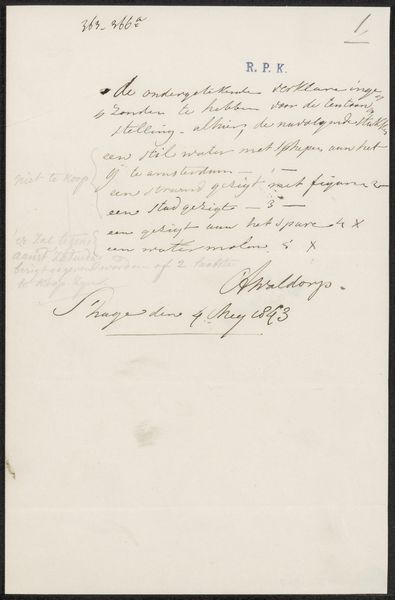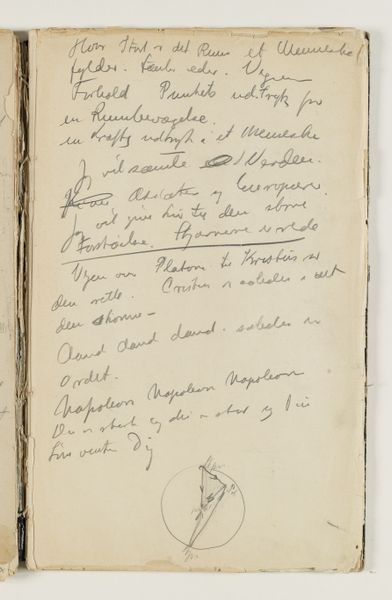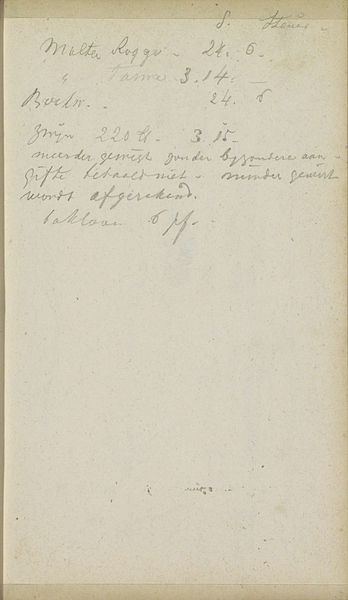
drawing, paper, ink
#
drawing
#
paper
#
ink
#
calligraphy
Copyright: Rijks Museum: Open Domain
Editor: Here we have Carel Adolph Lion Cachet's "Psalm 49:3," created around 1890 using ink on paper. It’s essentially a page of calligraphy, and my first thought is about the role of handwriting and script within devotional practices, particularly concerning access and social hierarchy. How do you interpret this work in the context of Cachet's time and possibly even today? Curator: That's a very insightful observation. Thinking about access is key. Calligraphy, especially religious texts, was historically the domain of the educated elite. Whose voices were being amplified, and whose were being suppressed or unacknowledged? The act of writing was itself a form of power. Does the psalm selection itself perhaps hint at social inequalities, wealth disparity, or justice? Considering it’s from Psalm 49, a psalm concerning wealth and death, the artist is potentially pointing toward something that is spiritually unsettling about worldly imbalances. Editor: So you're suggesting that Cachet might be using the act of writing itself, combined with the specific text, as a critique? Curator: Exactly. We can see Cachet interrogating who gets to interpret and disseminate sacred knowledge. Further, within colonial contexts, script and literacy were very contentious. Is there possibly an indication here about challenging or maybe maintaining structures of power? Editor: That's given me a completely different perspective. I was initially thinking about the beauty of the script but not necessarily its political dimensions. Curator: The aesthetics and the politics are not mutually exclusive. By connecting these visual choices with theological undercurrents and potentially disruptive colonial attitudes we can develop a much more nuanced picture. Editor: Thanks! I’ll definitely think differently about calligraphy now. Curator: Hopefully this has sparked some questions about other historical forms, the political implications of handwriting, and devotional life across different identities.
Comments
No comments
Be the first to comment and join the conversation on the ultimate creative platform.
